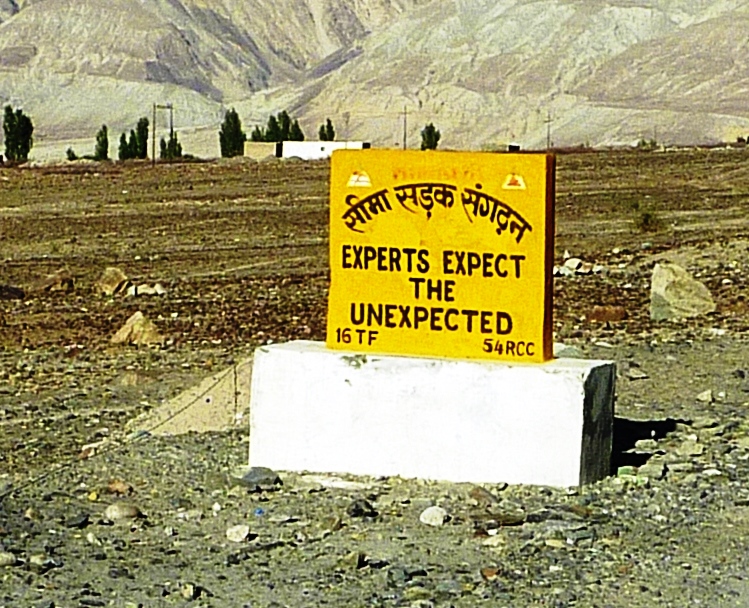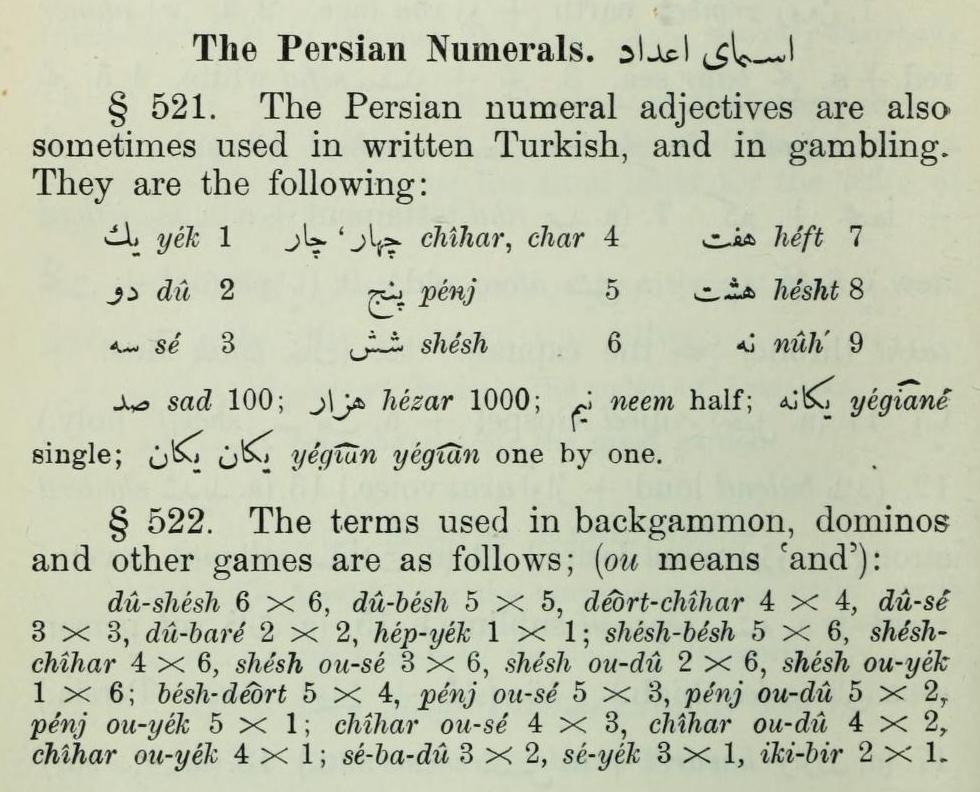|
Rollout (backgammon)
A rollout is an analysis technique for backgammon positions and moves. A rollout consists of playing the same position many times (with different dice rolls) and recording the results. The balance of wins and losses is used to evaluate the equity of the position. Historically this was done by hand, but it is now undertaken primarily by computer programs. In order to compare two or more ways to move, rollouts can be performed from the positions after each move. Better choices will yield a more favorable position, and thus will win more times (and lose more rarely) in the end. Computer programs usually play rollouts where the number of games is a multiple of 36, and ensure that the first dice roll is uniformly distributed. That is, 1/36 of the played games will start with a roll of ''1-1'', another 36th will start with ''1-2'', and so on. This improves the accuracy of the technique. Rollouts depend on the availability of a good evaluator. If the computer makes mistakes in particular ... [...More Info...] [...Related Items...] OR: [Wikipedia] [Google] [Baidu] |
Backgammon
Backgammon is a two-player board game played with counters and dice on tables boards. It is the most widespread Western member of the large family of tables games, whose ancestors date back nearly 5,000 years to the regions of Mesopotamia and Persia. The earliest record of backgammon itself dates to 17th-century England, being descended from the 16th-century Irish (game), game of Irish.Forgeng, Johnson and Cram (2003), p. 269. Backgammon is a two-player game of contrary movement in which each player has fifteen piece (tables game), pieces, known traditionally as 'men' (short for 'tablemen') but increasingly known as 'checkers' in the US in recent decades. These pieces move along twenty-four 'point (tables game), points' according to the roll of two dice. The objective of the game is to move the fifteen pieces around the board and be first to ''bear off'', i.e., remove them from the board. The achievement of this while the opponent is still a long way behind results in a triple wi ... [...More Info...] [...Related Items...] OR: [Wikipedia] [Google] [Baidu] |
Odds
Odds provide a measure of the likelihood of a particular outcome. They are calculated as the ratio of the number of events that produce that outcome to the number that do not. Odds are commonly used in gambling and statistics. Odds also have a simple relation with probability: the odds of an outcome are the ratio of the probability that the outcome occurs to the probability that the outcome does not occur. In mathematical terms, where p is the probability of the outcome: :\text = \frac where 1-p is the probability that the outcome does not occur. Odds can be demonstrated by examining rolling a six-sided die. The odds of rolling a 6 is 1:5. This is because there is 1 event (rolling a 6) that produces the specified outcome of "rolling a 6", and 5 events that do not (rolling a 1,2,3,4 or 5). The odds of rolling either a 5 or 6 is 2:4. This is because there are 2 events (rolling a 5 or 6) that produce the specified outcome of "rolling either a 5 or 6", and 4 events that do n ... [...More Info...] [...Related Items...] OR: [Wikipedia] [Google] [Baidu] |
Expert Backgammon
An expert is somebody who has a broad and deep understanding and competence in terms of knowledge, skill and experience through practice and education in a particular field. Informally, an expert is someone widely recognized as a reliable source of technique or skill whose faculty for judging or deciding rightly, justly, or wisely is accorded authority and status by peers or the public in a specific well-distinguished domain. An expert, more generally, is a person with extensive knowledge or ability based on research, experience, or occupation and in a particular area of study. Experts are called in for advice on their respective subject, but they do not always agree on the particulars of a field of study. An expert can be believed, by virtue of credentials, training, education, profession, publication or experience, to have special knowledge of a subject beyond that of the average person, sufficient that others may officially (and legally) rely upon the individual's opinion ... [...More Info...] [...Related Items...] OR: [Wikipedia] [Google] [Baidu] |
GNU Backgammon
A number of notable software packages were developed for, or are maintained by, the Free Software Foundation as part of the GNU Project. What it means to be a GNU package Summarising the situation in 2013, Richard Stallman identified nine aspects which generally apply to being a GNU package, but he noted that exceptions and flexibility are possible when there are good reasons: # The package should say that it is a GNU package. # It should be distributed via ftp.gnu.org, or another site offering access to everyone. # The package's homepage should be on the GNU website. # The developers must pay attention to making their software work well with other GNU packages. # Documentation should be in Texinfo format, or in a format easily convertible to Texinfo. # Should use GNU Guile for its extension language, but exceptions are explicitly possible in this regard. # Should not recommend any non-free program, nor refer the user to any non-free documentation or non-free software. # Use GNU t ... [...More Info...] [...Related Items...] OR: [Wikipedia] [Google] [Baidu] |
Backgammon Opening Theory
The first moves of a backgammon game are the opening moves, collectively referred to as the opening, and studied in the backgammon opening theory. Backgammon opening theory is not developed in as much detail as opening theory in chess, which has been widely studied. The reason for this is that following the first move in backgammon, there are 21 dice roll outcomes on each subsequent move, and many alternative plays for each outcome, making the tree of possible positions in backgammon expand much more rapidly than in chess. Despite the complications posed by this rapid branching of possibilities, over the course of many years, a consensus did develop among backgammon experts on what is the preferred opening move for each given roll. Following the emergence of self-trained backgammon-playing neural networks, the insights on what are the best opening moves have changed in some unexpected ways. Preferred opening moves The table below summarizes the most commonly preferred moves, f ... [...More Info...] [...Related Items...] OR: [Wikipedia] [Google] [Baidu] |
World Backgammon Federation
The World Backgammon Federation (WBGF), formerly the European Backgammon Federation (EUBGF) until 2018, is the international body established to support and promote the tables game of backgammon worldwide. Their functions include the regulation of competition rules worldwide, the assessment and ranking of players and the establishment of regional governing bodies. Among their objectives is the legal recognition of backgammon as a mind sport at national and international levels. The WBGF is based in Schwaz, Austria.''World Backgammon Association'' at ucolours.com. Retrieved 4 March 2022. Members The national backgammon organisations of the following countries are members of the WBGF:[...More Info...] [...Related Items...] OR: [Wikipedia] [Google] [Baidu] |
Backgammon
Backgammon is a two-player board game played with counters and dice on tables boards. It is the most widespread Western member of the large family of tables games, whose ancestors date back nearly 5,000 years to the regions of Mesopotamia and Persia. The earliest record of backgammon itself dates to 17th-century England, being descended from the 16th-century Irish (game), game of Irish.Forgeng, Johnson and Cram (2003), p. 269. Backgammon is a two-player game of contrary movement in which each player has fifteen piece (tables game), pieces, known traditionally as 'men' (short for 'tablemen') but increasingly known as 'checkers' in the US in recent decades. These pieces move along twenty-four 'point (tables game), points' according to the roll of two dice. The objective of the game is to move the fifteen pieces around the board and be first to ''bear off'', i.e., remove them from the board. The achievement of this while the opponent is still a long way behind results in a triple wi ... [...More Info...] [...Related Items...] OR: [Wikipedia] [Google] [Baidu] |



